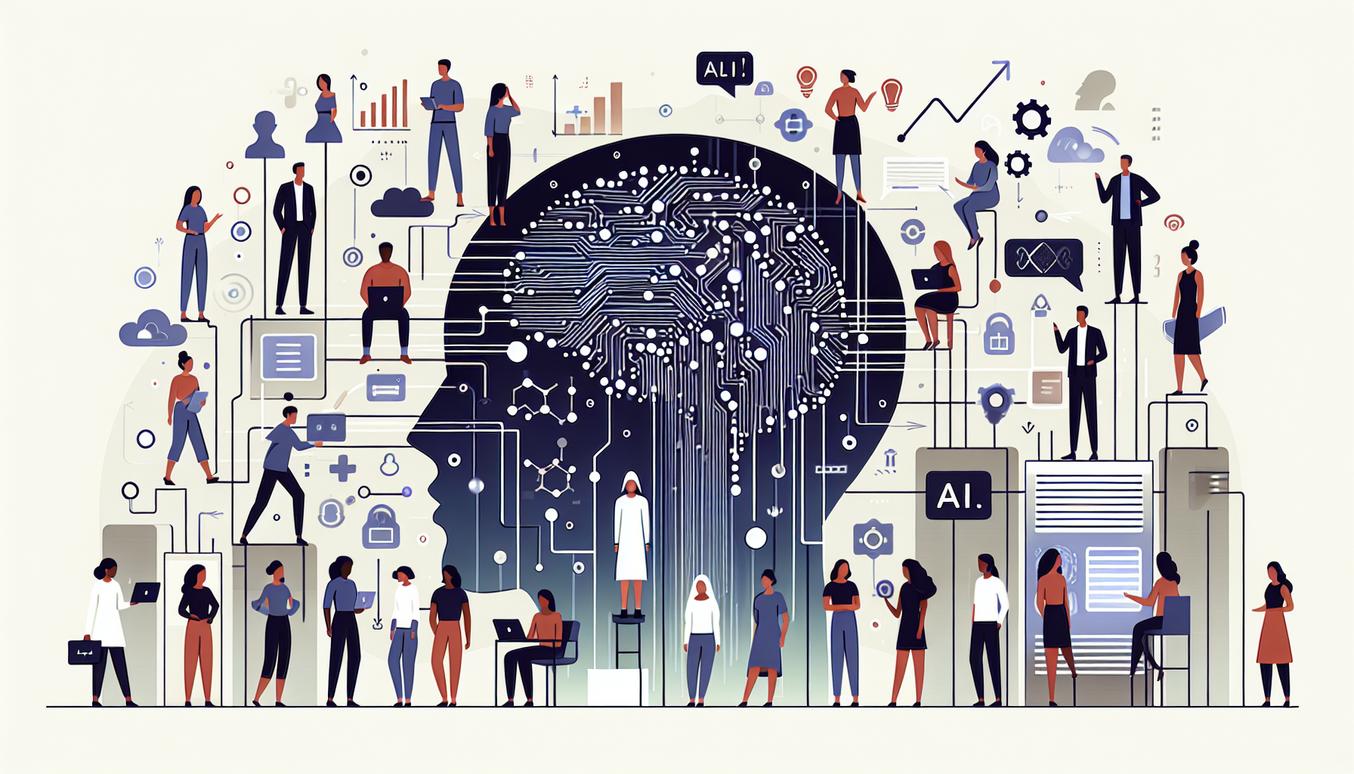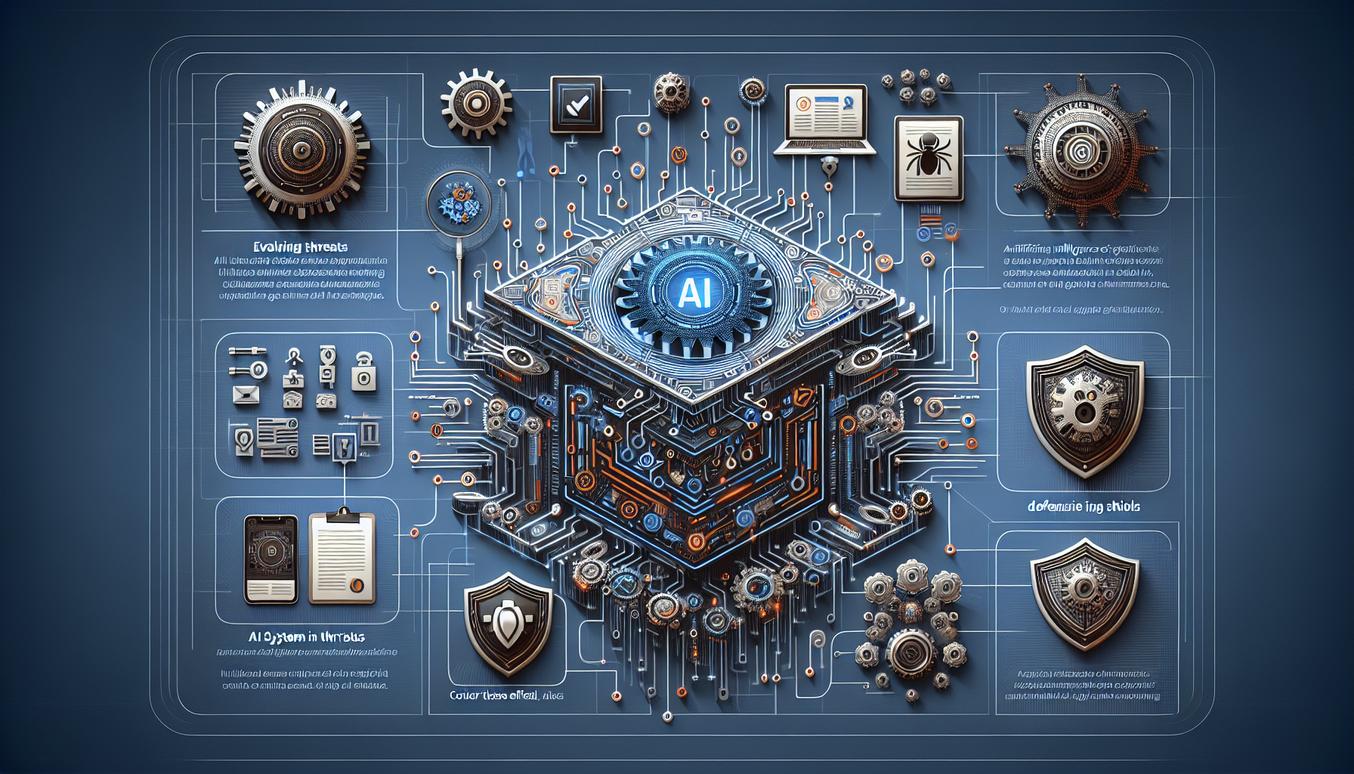Table of Contents
- Why AI Innovation Matters Today
- Core Paradigms That Drive Modern AI
- Translating Research into Reliable Systems
- Responsible Design and Governance
- Deployment Patterns and Operationalization
- Measuring Value and Adoption Metrics
- Industry Examples and Thoughtful Applications
- Common Challenges and Mitigation Tactics
- A Practical Roadmap Template for Teams
- Suggested Resources and Next Steps
Why AI Innovation Matters Today
Artificial intelligence has moved from a theoretical discipline to a fundamental driver of business and technological progress. Today, AI innovation is not just about creating smarter algorithms; it’s about building scalable, reliable, and ethical systems that solve real-world problems. For technology leaders and practitioners, understanding the landscape of AI is no longer optional. It is the core competency required to build competitive advantages, streamline operations, and create new value streams.
The pace of advancement is accelerating, making continuous learning essential. What was state-of-the-art yesterday is foundational today. This guide provides a comprehensive overview for navigating the complex world of modern AI, connecting breakthrough research with practical deployment strategies. We will explore the core technologies, ethical considerations, and operational patterns that define successful AI innovation in the current landscape.
Core Paradigms That Drive Modern AI
Modern AI is built upon several powerful paradigms that have matured significantly in recent years. Understanding these core pillars is crucial for any team looking to harness the power of artificial intelligence.
Neural Networks and Deep Architectures
At the heart of most modern AI systems are artificial neural networks. Inspired by the structure of the human brain, these models consist of interconnected layers of nodes or “neurons” that process information. When these networks contain many layers, they are referred to as deep learning architectures. This depth allows them to learn complex patterns and hierarchies from vast amounts of data.
Their strength lies in pattern recognition, making them incredibly effective for tasks such as:
- Computer Vision: Identifying objects in images and videos.
- Natural Language Processing (NLP): Understanding and generating human language.
- Speech Recognition: Transcribing spoken words into text.
Deep architectures like Convolutional Neural Networks (CNNs) and Recurrent Neural Networks (RNNs) have become the standard for tackling these complex perception tasks, forming the backbone of significant AI innovation.
Generative Models and Creative Systems
While traditional AI often focuses on classification and prediction, generative AI is designed to create new, original content. These models learn the underlying patterns and distributions of a dataset and then use that knowledge to generate novel outputs that resemble the training data. A key enabler of this field has been the Transformer architecture, which excels at processing sequential data.
This paradigm has unlocked a new wave of applications, from content creation to synthetic data generation. For a deeper technical overview, this Generative AI overview provides valuable insights. Common applications include:
- Text Generation: Writing emails, articles, and summaries.
- Code Synthesis: Generating functional code from natural language prompts.
- Image and Art Creation: Producing realistic images and artistic works from descriptions.
Reinforcement Learning for Decision Automation
Reinforcement Learning (RL) is a paradigm focused on training agents to make optimal sequences of decisions. Unlike supervised learning, RL does not require a labeled dataset. Instead, an agent learns by interacting with an environment and receiving rewards or penalties for its actions. The goal is to develop a policy that maximizes the cumulative reward over time.
This approach is particularly well-suited for problems involving dynamic environments and long-term planning. You can explore a detailed Reinforcement Learning primer to understand its core concepts. Prime use cases include:
- Robotics: Training robots to perform complex tasks like grasping objects.
- Supply Chain Optimization: Managing inventory and logistics for maximum efficiency.
- Game Playing: Mastering complex strategic games beyond human capability.
Translating Research into Reliable Systems
Breakthroughs in research are exciting, but their true value is only realized when they are translated into robust, reliable systems. This requires a disciplined approach to data, validation, and engineering.
Data Readiness and Feature Strategy
High-quality data is the lifeblood of any successful AI system. A data-centric approach prioritizes the quality, consistency, and relevance of data over simply tweaking model architecture. Key activities in this stage include:
- Data Sourcing and Cleaning: Identifying reliable data sources and correcting errors, inconsistencies, and missing values.
- Data Labeling: Accurately annotating data for supervised learning tasks, ensuring consistency across labelers.
- Feature Engineering: Selecting, transforming, and creating input variables (features) that best represent the underlying problem for the model to learn from.
A poor data strategy will undermine even the most advanced models, making it a critical first step in any AI project.
Model Validation and Continuous Evaluation
A model’s performance on a training dataset is not a guarantee of its effectiveness in the real world. Rigorous validation is necessary to ensure generalization. This includes testing the model on unseen data (a holdout or test set) to estimate its real-world performance.
Furthermore, validation is not a one-time event. Once deployed, models must be continuously monitored for model drift—a phenomenon where the model’s performance degrades over time as the statistical properties of the input data change. A continuous evaluation pipeline is essential for maintaining a high-performing and reliable AI system.
Responsible Design and Governance
As AI systems become more autonomous and influential, ensuring they operate ethically and responsibly is paramount. True AI innovation requires a commitment to fairness, privacy, and transparency.
Bias Audits and Fairness Checks
Algorithmic bias occurs when an AI system produces systematically prejudiced outcomes against certain groups. This bias often originates from skewed or unrepresentative training data but can also be introduced by model design choices. Proactively addressing this requires:
- Bias Audits: Systematically examining model predictions across different demographic subgroups to identify performance disparities.
- Fairness Metrics: Using statistical measures like demographic parity or equalized odds to quantify and benchmark fairness.
- Mitigation Techniques: Applying methods such as re-weighting data, adjusting model thresholds, or using adversarial debiasing to correct for identified biases.
Privacy Preserving Patterns
Many AI applications require training on sensitive personal data. Protecting user privacy is a non-negotiable aspect of responsible AI. Several techniques enable model training without compromising privacy:
- Federated Learning: Training a shared model across multiple decentralized devices (like mobile phones) without the raw data ever leaving the device.
- Differential Privacy: Adding statistical noise to data or model outputs to make it impossible to identify any single individual’s contribution.
- Homomorphic Encryption: Performing computations directly on encrypted data, allowing models to be trained without ever decrypting sensitive information.
Adhering to responsible AI frameworks helps organizations build trust and ensure compliance with regulations.
Deployment Patterns and Operationalization
An AI model only delivers value when it is successfully deployed and integrated into business processes. This discipline, known as MLOps (Machine Learning Operations), focuses on the entire lifecycle of a model from development to production.
Scalable Inference Strategies
Inference is the process of using a trained model to make predictions on new data. A scalable inference strategy is critical for serving these predictions reliably and cost-effectively. Common patterns include:
- Real-Time API Endpoints: Exposing the model via an API for on-demand predictions with low latency.
- Batch Processing: Running the model on large volumes of data at scheduled intervals, suitable for non-urgent tasks.
- Edge Deployment: Deploying the model directly onto devices (e.g., smartphones, IoT sensors) to reduce latency and operate without constant connectivity.
Monitoring and Incident Playbooks
Production AI systems require robust monitoring that goes beyond typical software metrics. Teams should track:
- Data Drift: Changes in the statistical distribution of input data.
- Concept Drift: Changes in the underlying relationships between inputs and outputs.
- Performance Metrics: Model accuracy, precision, recall, and other relevant KPIs.
When monitoring detects an issue, having pre-defined incident playbooks ensures a swift and structured response to diagnose the problem, assess its impact, and execute a rollback or retraining strategy.
Measuring Value and Adoption Metrics
The success of AI innovation cannot be measured solely by technical metrics. It must be tied directly to business outcomes and value creation.
Business Aligned KPIs for AI
Instead of focusing only on model accuracy, teams should define Key Performance Indicators (KPIs) that reflect the project’s business goals. This aligns the AI initiative with the broader organizational strategy and demonstrates tangible ROI. Examples include:
- Operational Efficiency: Reduction in manual hours for a specific task or decrease in processing time.
- Revenue Growth: Increase in sales from a recommendation engine or uplift in customer lifetime value.
- Cost Reduction: Savings from improved fraud detection or optimized supply chain logistics.
- Customer Satisfaction: Higher Net Promoter Score (NPS) or lower customer churn rates.
Industry Examples and Thoughtful Applications
AI is transforming industries by enabling new capabilities and solving long-standing challenges. Thoughtful application is key to successful adoption.
AI in Healthcare and Patient Safety
In healthcare, AI is being used to analyze complex medical data to improve diagnostics and treatment. Applications include analyzing medical images (X-rays, MRIs) to detect diseases earlier, predicting patient risk for conditions like sepsis, and personalizing treatment plans based on genetic and clinical data. The focus on accuracy and reliability is paramount to ensure patient safety.
AI in Finance for Risk Management
The financial sector leverages AI to manage risk and combat fraud. Machine learning models can analyze thousands of transaction variables in real time to detect fraudulent patterns that would be invisible to human analysts. AI is also used for algorithmic trading, credit scoring, and ensuring compliance with financial regulations by monitoring for illicit activities.
Common Challenges and Mitigation Tactics
Despite its potential, pursuing AI innovation comes with challenges. Acknowledging and planning for them is crucial for success.
- Challenge: Data Scarcity or Poor Quality.
Mitigation: Invest in a robust data governance strategy. Use data augmentation or synthetic data generation techniques where appropriate. - Challenge: The AI Talent Gap.
Mitigation: Focus on upskilling existing teams. Develop cross-functional “pods” that combine data science, engineering, and business expertise. - Challenge: Integration with Legacy Systems.
Mitigation: Design AI systems with APIs for flexible integration. Adopt a microservices architecture to decouple the AI component from monolithic systems. - Challenge: Managing High Computational Costs.
Mitigation: Leverage cloud-based AI platforms for scalable, pay-as-you-go resources. Explore more efficient model architectures and hardware accelerators.
A Practical Roadmap Template for Teams
A structured roadmap can guide your team from idea to impact. Consider a phased approach for your AI initiatives starting in 2025.
- Phase 1: Discovery and Strategy (2025)
- Identify high-impact business problems where AI can provide a solution.
- Assess data readiness and availability.
- Define clear success metrics and business-aligned KPIs.
- Conduct an initial ethics and bias risk assessment.
- Phase 2: Prototyping and Validation (2025-2026)
- Develop a proof-of-concept (PoC) model to test feasibility.
- Rigorously validate the model’s performance on offline data.
- Refine the approach based on PoC results and stakeholder feedback.
- Phase 3: Operationalization and Scaling (2026)
- Build a production-ready data pipeline and deployment infrastructure (MLOps).
- Deploy the model as a pilot or A/B test to a limited audience.
- Establish comprehensive monitoring for performance, drift, and system health.
- Phase 4: Optimization and Expansion (2027 and beyond)
- Use production feedback to continuously retrain and improve the model.
- Scale the solution across the organization.
- Identify new use cases based on the established capabilities and infrastructure.
Suggested Resources and Next Steps
The journey of AI innovation is one of continuous learning and adaptation. The paradigms, patterns, and processes discussed in this guide provide a strong foundation for building effective and responsible AI systems. The key is to start with a clear business problem, embrace a data-centric and ethics-first mindset, and build an iterative process for development and deployment.
We encourage you to explore the resources linked throughout this article to deepen your understanding. By combining technical excellence with strategic vision, your organization can unlock the transformative potential of artificial intelligence.









